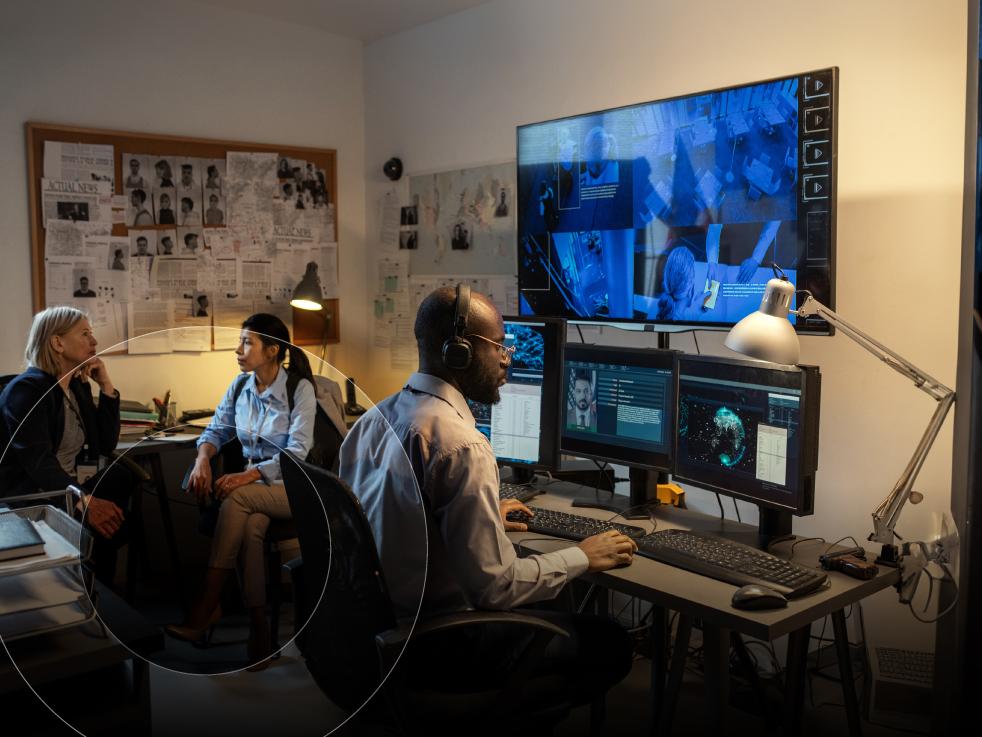Could technology drive a pink-collar resurgence?

As organizations around the world consider whether to bring pandemic-remote employees back to physical offices, they are presented with an opportunity to change the landscape as far as gender roles are concerned.
As lockdown started to bite last year, with workers, students, and schoolchildren being sent home to attempt to carry on working and learning online, we saw the first signs that women were being disproportionately impacted by job losses. Many of us witnessed the impact on our friends and colleagues, and we started to see predictions of a ‘pink collar recession’.
Like many organizations, we’re now well into our return-to-office plans here at SHI. Our CEO, Thai Lee, spoke on the topic in March during this International Women’s Day panel session hosted by The Economic Club of New York (if you don’t have time to listen to it all, start at about 21 minutes), and talked about how, as we continue to build our roadmap for returning to a less virtual post-pandemic business model, we are looking at both roles and individual experience to better tailor our approach to the specific needs of our diverse workforce.
We’re being deliberately thoughtful about what we’re asking people to come into the office for, and we’re also envisaging a more geographically diverse workforce as we recruit for roles where location isn’t relevant.
And yet, as rising vaccination rates create a growing feeling of optimism and we get closer (in some countries, at least) to the possibility of offices fully reopening, the global debate has become more heated. It’s clear that not everyone involved in the discussion is objective – many of the social media posts advocating ‘back to the office’ come from companies involved in providing office space or physical infrastructure-dependent services like transformation maintenance.
What’s clear is that there is no one-size-fits-all solution to the on-site, remote, or hybrid question, because some jobs are clearly harder to do remotely than on-site. Despite advances in remote surgery, for example, there is a need for a large number of people to be on-site, with the patient, in a specialized facility, while the surgery is taking place – even if the lead surgeon is thousands of miles away.
We’ve already explored many of the technology challenges associated with hybrid working and talked about how a more flexible, hybrid working model could benefit employees with disabilities. But what about other groups who have traditionally struggled for equality in the workplace? Women, who before the pandemic were more likely to combine the role of primary caregiver with their work responsibilities (often at a time critical to career development), are now better positioned to have conversations about flexibility in terms of both location and hours – conversations that were often difficult before the first lockdowns sent everyone home.
What comes next?
As the ‘all back to the office’ vs. ‘all back home’ and every-option-in-between debate continues to rage, what should we be considering as organizations and workers alike plan for a very different future of work? How can we use this opportunity to break down gender barriers in the workplace and make the workplace more equal?
Rather than attempting to go ‘back to normal’ or even invent a ‘new normal’ (which, unless we accept that continuing uncertainty, disruption, and change are ‘normal’ is unrealistic ), we need to consider why we work the way we do. Our traditional 5- or 6-day, 9-to-5 working week was dictated by the specific needs of manufacturers. Agricultural societies had a working day that varied with the seasons, and until the advent of mechanized machinery with headlights, the daily schedule was based largely on daylight hours. With industrialization, the cost of lighting offices, factories, and homes outside daylight hours became a key driver of modern work schedules.
Now, the world of work is global, and we communicate across multiple time zones – which means many of us need to work outside our contractual working hours in order to get the job done. Let’s face it: in many roles, these ‘office hours’ are essentially meaningless, and sticking to them would be counterproductive. What matters most is how global workforces pull together across multiple time zones to flexibly support customers anytime, anywhere.
While many women struggled during the pandemic, there were others who thrived, as working from home offered many women the opportunity to balance their often-conflicting professional and personal responsibilities more effectively than they might have been able to pre-pandemic. I’ve been working remotely for 12 years now, and hybrid for around five years prior to that – and this has meant I’ve been much better equipped to work flexibly, which has been critical when working with both colleagues and customers spread across the globe.
In addition to this flexibility to structure the working day around business needs rather than arbitrary office hours, both women and men have talked about benefits such as:
- More balanced division of childcare with both parents at home as children no longer automatically see one as the primary caregiver.
- More balanced sharing of domestic tasks with the whole family at home.
- Not missing out on important meetings that happen outside ‘office hours’.
- Not missing out on social activities outside office hours.
- Not missing out on important family activities – such as parents’ meetings, sports days, medical appointments, and care discussions – that happen inside normal working hours.
- Eating meals as a family – which improves communication, relationships, and even table manners!
This highlights that gender equality isn’t just about making it easier for women to access the workplace – it’s also about changing attitudes toward men in the workplace so that they can take on a different role at home. While hybrid/flexible working allows women not to miss out at work because they have had to rush back home and miss a vital meeting, it also allows men not to miss out at home because it is expected that their partner will deal with childcare so that they can attend the vital meeting.
I’ve talked to people who have changed their working pattern to five days in four, or simply cut to four or even three days. Crucially, many of those making these changes are men who want to stay involved with day-to-day family activity, spend less time commuting, and prioritize quality of life. The pandemic has made people reflect on what matters and combined with the experience of working differently and the high levels of burnout due to the multiple stresses we’ve been subject to over the past 15 months, many people have reprioritized.
Technology supports flexibility
Technology that allows us to work flexibly both in terms of location and time, as well as collaborate asynchronously with colleagues around the world means that individuals can work in ways that bring their roles and lifestyles together. The ability to record or transcribe Teams meetings makes them accessible to those who can’t attend – as is the ability to continue the discussion within the meeting record even after it has ended. I’ve also worked collaboratively on this blog post with my colleagues in North America, starting work in the morning by checking for their comments and feedback before making my updates.
With significant concerns around skills shortages and increasing talk of the ‘Great Resignation,’ there’s a fundamental shift going on in expectations around roles – particularly women’s roles – as companies navigate their return-to-office planning. We are at a pivotal point where the conversations we have in the next few months will influence whether past imbalances in gender-based workplace policies will be either perpetuated or (hopefully) banished forever.
Solutions that allow work to become as flexible and accommodating to our personal lives as our lives are to accommodate work, whether that’s online access to applications through Desktop as a Service or providing hardware and support to end-users at home through Device as a Service, we can support your organization to provide the flexible working solutions that will allow them to achieve the balance they need to be productive at work without feeling the pressure at home.
Wherever you sit in your organizational structure, and however you identify, now is the time to open the discussion with your manager, leadership team, and stakeholders about gender-appropriate role expectations – and agree on what you collectively must do to ensure every employee returns to the office on an equal, inclusive basis.




